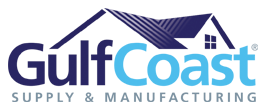 Metal roofs offer a number of benefits for both homeowners and roofing contractors. Installation problems, however, can cause functional or aesthetic issues that can result in problems, delays and unhappy clients. Following are the five most common roof installation issues and how to solve them.
Metal roofs offer a number of benefits for both homeowners and roofing contractors. Installation problems, however, can cause functional or aesthetic issues that can result in problems, delays and unhappy clients. Following are the five most common roof installation issues and how to solve them.
Metal shavings causing rust streaks
Installing a metal roof requires drilling through the aluminum or steel roof panels to attach them to the substrate. The process creates metal shavings, especially at rivet holes along the ridge cap or when drilling through multiple layers of roof panels.
Those tiny shards of metal can cause rust and stains on the roof, as well as corrosion that shortens the lifespan of the roof. The more layers of metal a crew has to drill through, the more shavings will be produced.
“Shavings are no problem when removed quickly,” according to Paul Hope, field service technician for Gulf Coast Supply. “It is when they are left behind that they become an issue.
“When metal shavings sit on the roof for a week to a month they start to corrode,” Hope says. “That corrosion leads to staining of your panels, and that staining leads to unhappy homeowners.”
Roofers should get in the habit of either sweeping or blowing metal shavings off of the roof at the end of the workday, Hope says.
Improperly installed underlayment
Underlayment has to be carefully measured and lapped to avoid moisture infiltration into the building envelope. Local building codes specify lap coverage guidelines and slip sheet placement for underlayment installation.
“Underlayment acts as a secondary water barrier if rain ever makes it past your metal roof,” says Jared Pearce, technical services manager for Gulf Coast Supply. “Some of the most common causes of water intrusion are fastener failure, wind-driven rain (in the event of an extreme storm) or metal-to-metal connections with no sealant.”
Avoiding underlayment issues is easy to do if the crew follows installation instructions and code requirements. If underlayment is not installed correctly, however, replacement costs can be expensive and involve removing the metal roof, replacing the roof substrate and installing new underlayment.
Over- and under-tightened fasteners
Proper fastener installation is critical to the efficiency of a roof system. Because fasteners penetrate the metal roof, underlayment and roof deck, they can allow for water infiltration into an otherwise waterproofed roof.
During the installation, screws must be straight and tight to perform as intended. Pearce stresses that fasteners that are not installed straight do not form a proper seal. And even when straight, over-tightening the screw compresses the washer too much, forms “dimples” in the metal panel and causes water pooling that can then infiltrate the attic.
Under-tightened screws won’t hold the roof panel securely and can cause premature wear of both the fastener and panel.
Inadequate onsite storage arrangements
Roofing materials should be delivered in a particular sequence, close to the time roofers will need them. The longer roofing materials, such as panels, are stored on site, the more prone they will be to damage from the elements or construction-site mishaps.
Workers should pay attention to where and how materials are stored. Are they out of the way of vehicles? Are they on a flat surface? Are they elevated on one end to allow for drainage of rainwater?
Standing water, especially on unpainted panels, can cause wet storage stains or “white rust,” Pearce notes. Sand, dirt and debris can also damage metal panels, causing permanent stains before they are ever installed on a roof.
Delays due to worker injury
Safety is crucial in any job site but especially when installing a metal roof. Accidents and injuries can send workers to the hospital and affect scheduling and productivity of the job.
“Medical bills, downtime, and loss of skilled laborers for extended periods of recovery can take place,” Hope says. “It is the responsibility of every individual to properly protect themselves from day to day.”
Falls are the most common potential metal roofing injury. Workers should use harnesses when on the roof and in any other fall-risk situations. Someone on the crew also needs to maintain the condition of the safety equipment. “Nicks in the harness can jeopardize your entire fall system,” Hope says.
Cuts caused by the sharp edges of the metal panels are also a hazard. Gloves and Kevlar cut sleeves can help roofers protect themselves.
Less common threats include electrocution and burns. Electricity, whether from a live current or lightning, can travel through the metal. Rubber shoes and gloves can protect roofers from potentially fatal shocks. Burns are less common, but in hot climates, the sun can heat metal enough to cause an injury. Workers can protect themselves with gloves and protective clothing.
Taking care to address these five common metal roofing installation issues can result in a smoother, more effective process, fewer problems and more satisfied clients.
Contractors, let us quote your next metal roof!
